- I need to read the book to understand this chapter.
- challenge question
- Map Coloring problem
- Constraint Graph
- Constraint Hypergraph for the challenge question
- Backtracking Search
- quiz
- forward checking
- Structured CSPs
- Iterative Algorithms
- the challenge question
This week: watch Lesson 4, Constraint Satisfaction, and read Chapter 6 in AIMA (Russell & Norvig). Assignment 2: Tridirectional Search **Due: September 24! Here is the GitHub repo.
I need to read the book to understand this chapter.
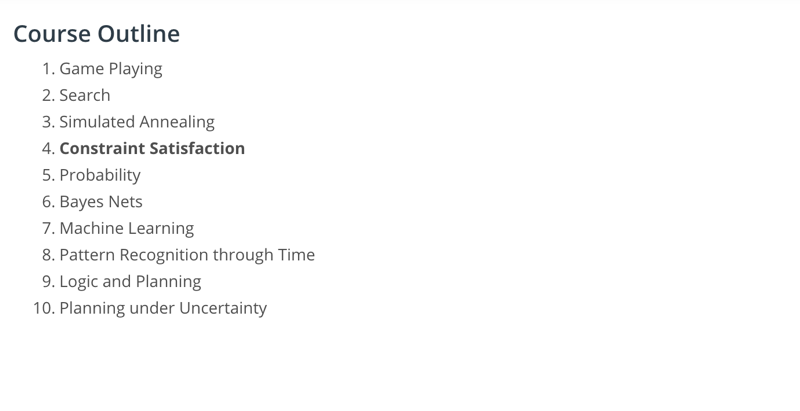
challenge question
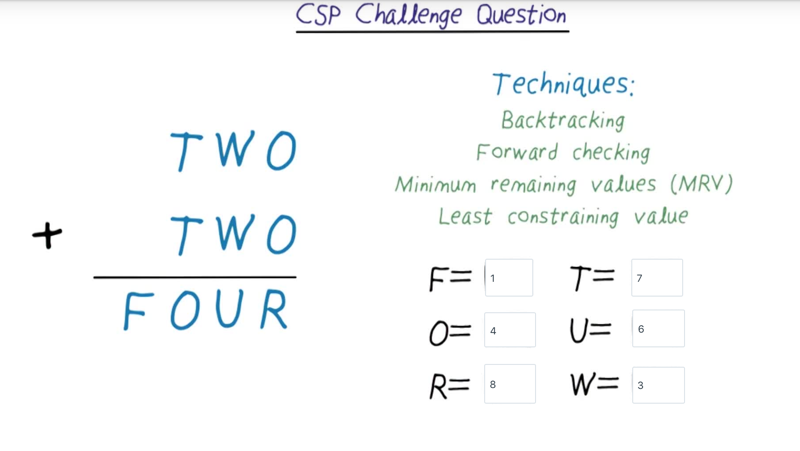
- use the techniques mentioned in the quiz to solve a problem like this
Map Coloring problem
- question: color the map with a minimum number of colors while no states adjacent will be colored the same.
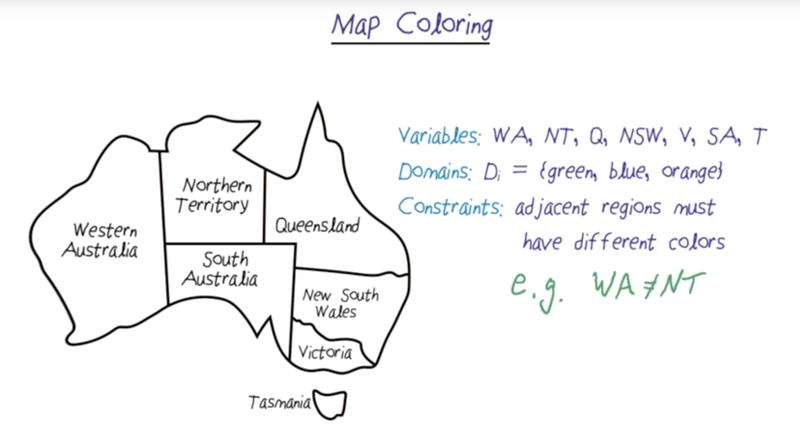
The map-coloring problem has the following components:
- Variables
- Domains
- Constraints: or rules to specify the problem.
- Unary constraints concerns only one variable.
- The problem can be illustrated by a Constraint Graph if the constraints are binary.
Constraint Graph
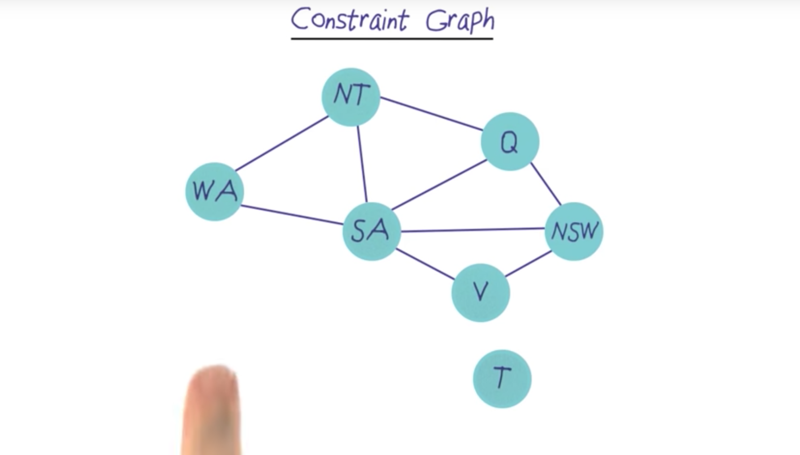
- Nodes are variables
- Arc (Edges) represents constraints.
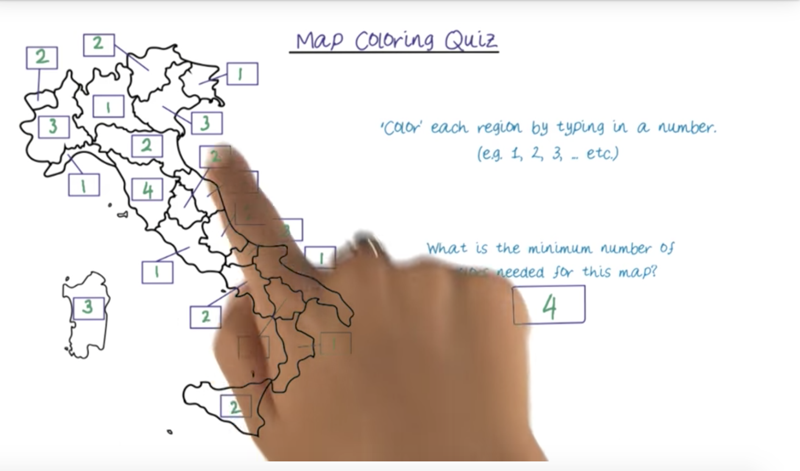
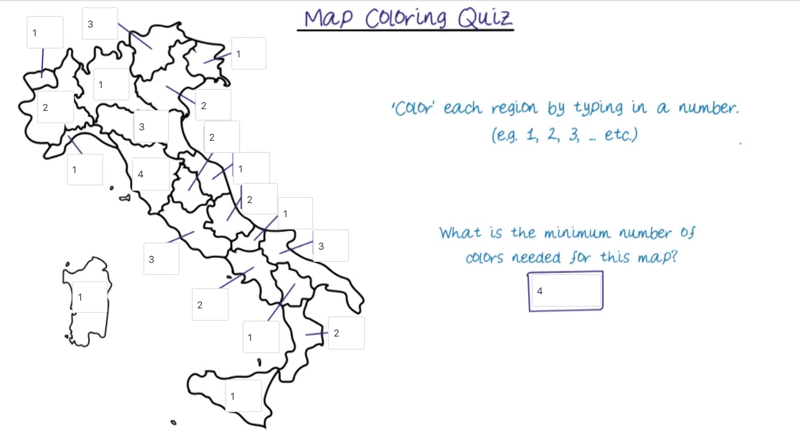
There are multiple solutions to the quiz. But all the solutions must follow the rules (satisfy the constraints).
- Constraints can be multi-nary and soft constraints.
Constraint Hypergraph for the challenge question

Backtracking Search

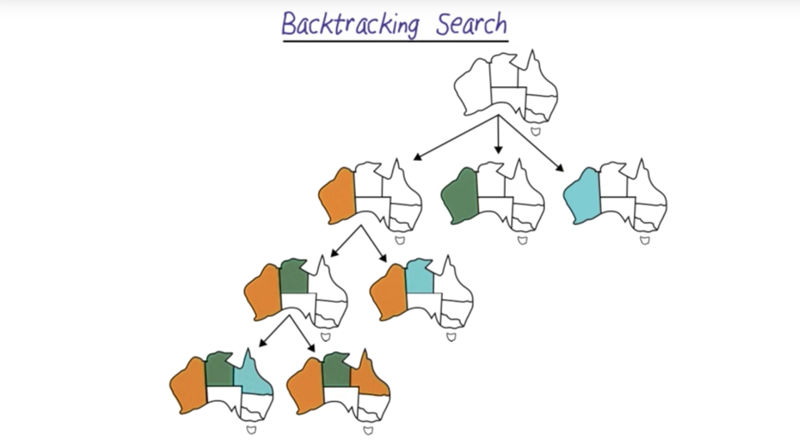
- backtrack search is like depth-first search, it goes deeper and deeper until it reaches a “dead-end”
- In case of dead-end, the algorithm backtrack up to the upper division to try another branch.
- repeat these steps until the solution is reached.
There are ways to improve the search efficiency
- choose the least constraining value for each step
- choose the variable with the fewest legal values

- in the image above, in the branching step, which area should we choose to color? Least constrain value will choose the right-upper corner because it has more color to choose from. if we choose orange again, we will leave green to be unused (or lest constrained).
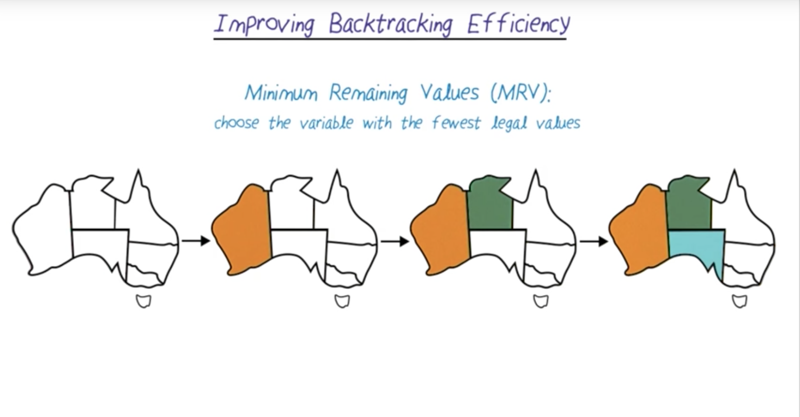 [Minimum remaining values]: or we can choose the middle-lower region because it has the least color to choose from.
[Minimum remaining values]: or we can choose the middle-lower region because it has the least color to choose from.
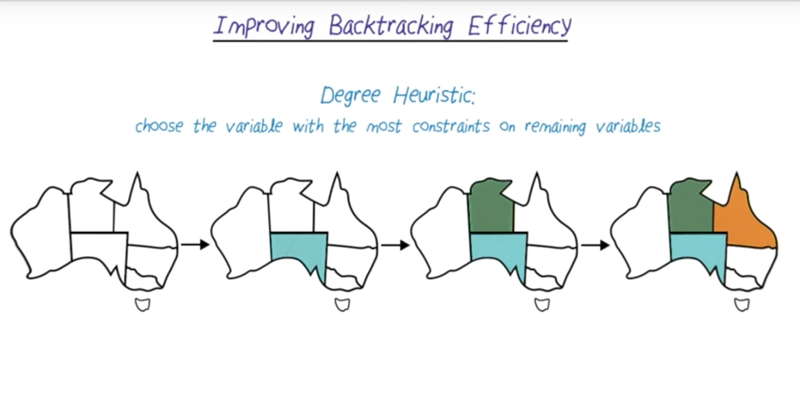 When there is a tie, a heuristic could be used to select the next step/ area to explore.
When there is a tie, a heuristic could be used to select the next step/ area to explore.
quiz
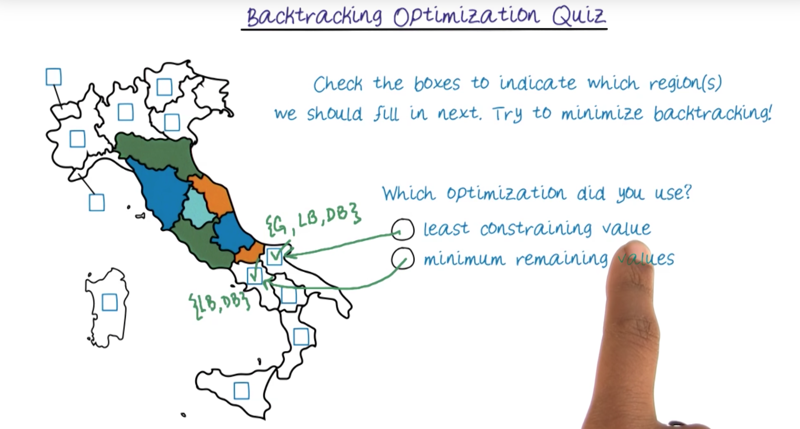
- we can use minimal remain values to choose the region adjacent to the red and blue blocks because this will make it region only have 2 colors to choose from (minimum remaining values)
- Or we can choose the one on the top if it since it only has one color to choose from (least constraining values) since it only have Green to use.
forward checking
- we can also use forward checking as a warning system for dead-end branches
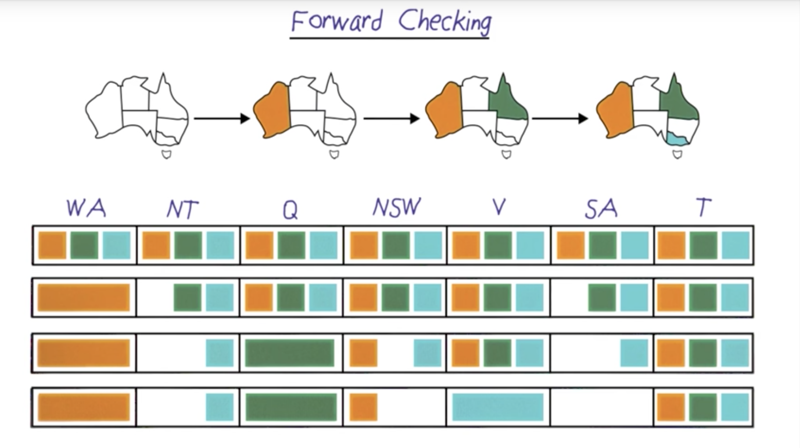
- forward checking keeps track of the available domain for each variable in each step
- a dead-end is reached when there is no domain for an unresolved variable.
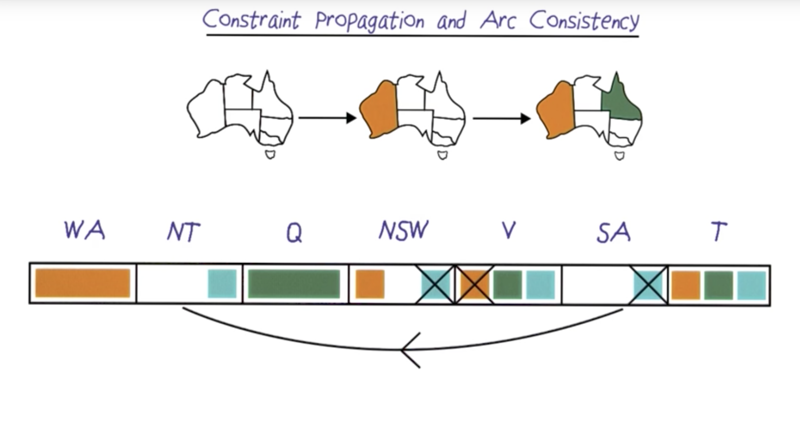
- Arc Consistency: all the variables have at least a value in the possible domain.
- Neighbors should not have the same color, thus a selection of a color can have a chain effect on the domain for variables.
- when we find a region has no value available to assign, return ‘Failure’ to the problem.
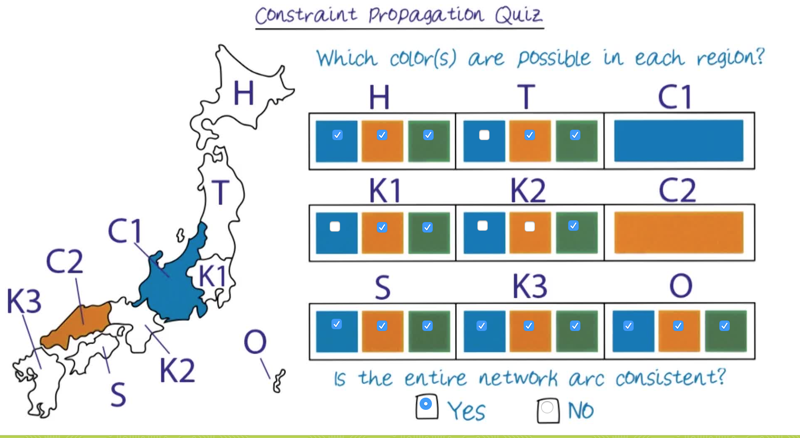 Question: select all the possible values for each region and indicate whether the entire network arc consistent or not.
Question: select all the possible values for each region and indicate whether the entire network arc consistent or not.
Structured CSPs
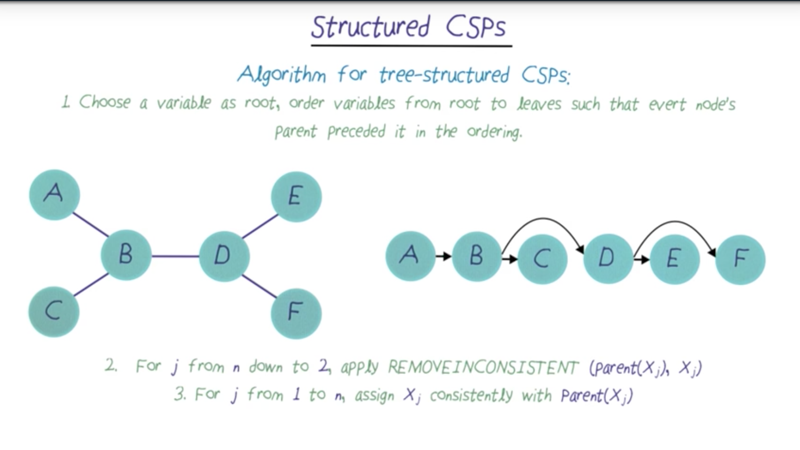
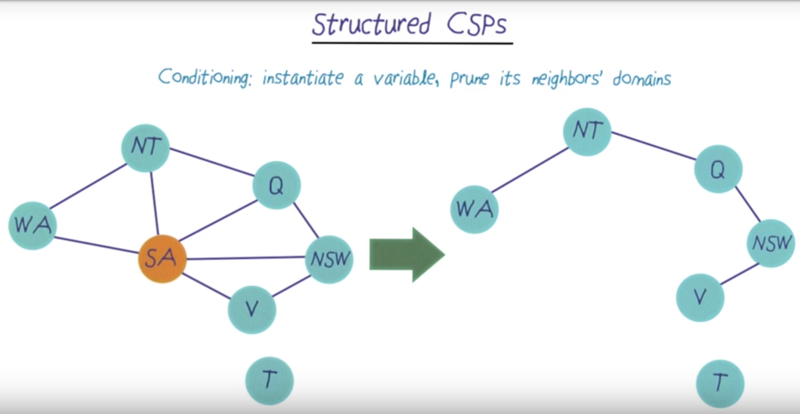
- How fast the algorithm will be?
Iterative Algorithms
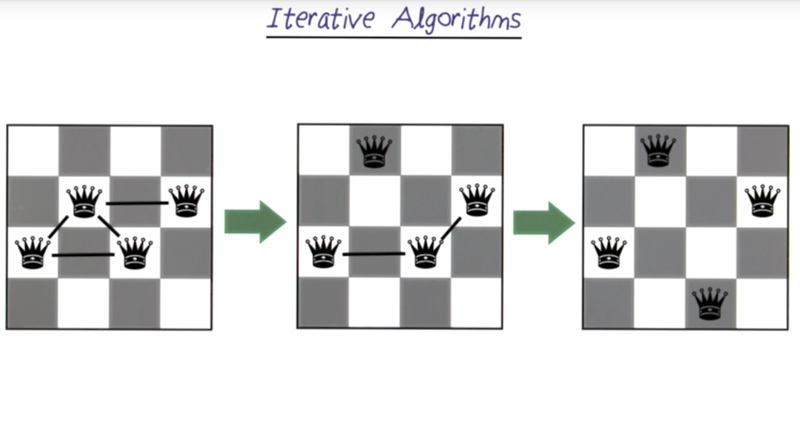
- Iterative Algorithms works very well then the solutions are plenty or very few.
- the problem becomes hard to solve when the ratio of constraints and solutions reaches a critical ratio
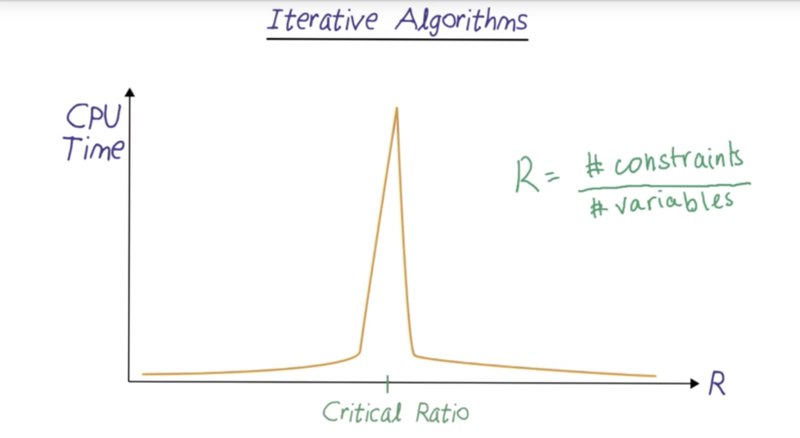
the challenge question
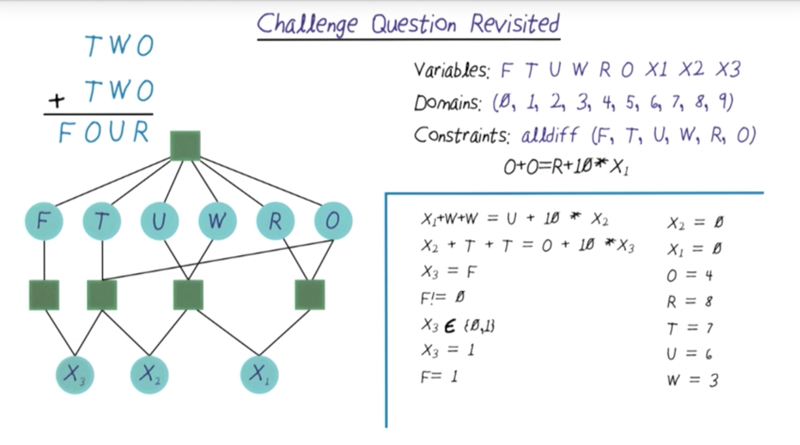
can be resolved by forward-checking: checking the available domains for values.
#s Readings
AIMA: Chapter 6